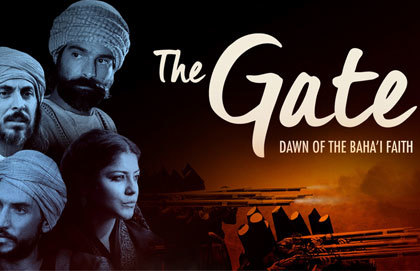Hollywood’s finest most manipulative marketing minds couldn’t have created a moment more perfectly timed for release of Christopher Nolan’s Dunkirk.
Nazis – at least of the neo variety – assaulting the landscape. Swarming violence arising without warning, source or reason. Confused retreat with a crowding sense of defeat that pushes everything off its moorings, seemingly foreclosing resolution or escape. A manufactured maniac in charge; a weakened, directionless opposition caught off guard and out of its depth against him.
If those are the markers of summer 2017, they were an even grimmer ubiquity in the spring of 1940 when about 300,000 members of the British Expeditionary Force were forced backwards to the edge of the sea on a beach in France. Fittingly, Nolan’s Dunkirk does far more than document and re-create the first military crisis on which the Second World War, in its very earliest days, careered wildly around the axis of history. It lifts, through its techniques of cinematic and narrative fragmentation, those events of 77 years ago and impels them physically upon us and into us.
We are no longer merely an audience with tickets to the movies. We’re forced participants in the sensory shock and maddening cloud of unknowing that enveloped the beach at Dunkirk, and that now afflict our guts as we check our news feeds and social media. History, we experience, is not some curiosity for which we reach backward. It is a force that trails – stalks? – us, morphing past into present moment, dizzying us with its capacity to be at once clearly recognizable yet humanly and ideologically faceless. In Dunkirk, the historical menace of the Blitzkrieg presents only as The Enemy. It is always exclusively outside camera range. We never once hear the descriptors “German” or “Nazi,” much less see a single Wehrmacht soldier in uniform.
So, is the historical force we feel merely an effect of Nolan’s sturm und drang directorial method? Are we tricked into mistaking Imax immediacy for authentic understanding? Are the parallels that blend “then” so seamlessly into “now” mere movie industry manipulation of our eagerness to imagine, rather than know, our own history?
Curious about this question, Convivium asked a Calgary couple, Irving Hexham and Karla Poewe to watch Dunkirk and then talk about its effect on them.
Both were born during the Second World War but in mirror image circumstances. Karla was born in Germany at the outset of the war; Irving in England nearer war’s end. Both of their childhoods were ineluctably formed by what happened after Dunkirk, particularly by the weight of memory that impressed itself so deeply into the post-war world. Both became distinguished academics: Karla as an anthropology professor; Irving as a historian and professor of religious studies. Both have worked extensively researching new religions, and the way cults form, and deform, human behavior.
For Karla, watching Dunkirk was literally gut wrenching. She struggled at one point to keep from bolting out of the theatre. But her physical experience was, she said, driven by intellectual rather than emotional bombardment.
“Throughout the film, I thought this is all brain, and yet my gut was in knots. It was an awful sensation. I wanted to leave, but I couldn’t. There was a peculiar absence of emotions in the characters and in myself. Above all, I was absorbed by the filmmaker’s techniques, which I saw as guided predominantly by brain work,” she told Convivium.
Irving found the film left him strangely empty save for a sense of irritation at historical inaccuracies or exaggerations. The distance he felt, he said, was because Dunkirk’s narrative contained nothing of the mythic or religious qualities of the miraculous rescue that filled his English boyhood.
“Nobody in the movie prayed,” he pointed out. “There were no chaplains. There we no Bibles. But at Dunkirk, a lot of soldiers carried New Testaments. Growing up, I heard (former soldiers) talking about walking along the beach, and the people were just praying to get out. They were reading the Bible. There were Methodists who had little meetings. That is totally gone from the film. There is no religious content. There is no sense of the sacred.”
The absence of the sacred, Irving said, obliterated any sense of the human.
“I thought they were almost robots standing there. There was a lack of feeling, which I just don’t think was realistic,” he said. “There was this impersonality to it. It could be moving. But it left me feeling empty because it lacked the human.”
Karla, too, found Dunkirk “deeply atheistic” but, because of her German childhood, for reasons that were almost the opposite of Irving’s. She could know only as human experience what he could not forget as personal history.
“I didn’t grow up with the mythology of Dunkirk or any of the actual stories about it. So, I had to see this as an existential phenomenon, a sense that it is epitomizing human experience: an extreme experience of rescue.”
But the way that experience was expressed, she said, overwhelmingly emphasized right conduct and negated the turmoil of the soul: love beyond the salvation of the self.
“There was a strong sense of ethics. Human decency was preserved. But there was no revenge, no deep human resentments, only this decency that is deeply atheistic, deeply secular, desiring to leave out the transcendent altogether.”
Both Irving and Karla acknowledged what they saw as transcendent absence was, at least in part, Nolan’s attempt to convey the British character of stoicism, duty, hanging on in quiet desperation as the English way. For Karla, the technique of that conveyance was an all-absorbing mimesis. The flinching of a pair of tightly cropped pair of eyes scanning the horizon became a representation of the universal sense of danger. The showing of the knowing calmness of pilot’s eyes as he made ready for a crash landing on the beach became a simulacrum for escape from peril and a signal of safe arrival home.
“When you see the captain (Commander Bolton, played by Kenneth Branagh), he stands on the narrow jetty and suddenly you see his head moving. The ear is moving in the direction of a sound, and the camera zeros in on it. Then they zero in on his eyes that are anticipating danger. This is what fascinates me throughout the film. It’s the same thing with the shell-shocked British soldier: his physical position shows what’s happening to him.”
Nolan’s masterful substitution of this fragmentary physicality into the gaps of conventional story telling, Karla said, becomes the means by which intellect becomes emotion in Dunkirk. The force required to be attentive to such miniscule mimetic moments, situated deep within the miasma of unknowing that is the overarching historical narrative, brings the existential crisis not just to the fore but into the present. We, as watchers, become immersed in it as the shell-shocked soldier who races down the beach near the film’s midpoint is in the waves where he plunges into in a futile, suicidal, and ultimately purely rational act of saving himself.
In those fragments, history becomes whole, or at the very least contiguous. The miraculous chaos of the Dunkirk rescue becomes the inconceivable confusion of Britain’s Brexit vote. The plight of the British Expeditionary Force facing the sea became the disaster of refugees facing drowning as they seek salvation in Europe from a myriad of war torn lands. And The Enemy?
Swarming, anonymous, menacing, known only by word of mouth and always shadows at the camera’s edge who is The Enemy?
Neo-Nazis in the streets?
A manufactured maniac for a president?
Terrorists?
Us?
“Why do you write a film where the enemy is, in a sense, absent?” Karla asked. “You know the enemy is there, but it’s silent. Why?”
Some would answer that the enemy is silent because it’s greedily watching a movie called Dunkirk that Hollywood’s finest marketing minds have manipulated it into seeing. But for Irving, the answer comes from a less self-involved source. Indeed, it ultimately doesn’t involve the self at all.
When the soldiers rescued from Dunkirk come home, they come home to a home that we movie-watchers know, provided we are minimally historically aware, ceased to exist within a generation. One of the most powerful markers of that cessation was the loss not merely of British character but of British faith.
“I don’t think there was ever a Christian Britain as it’s sometimes mythologized, but nevertheless there was a current (of faith). And it affected ordinary, working class people very deeply. They might not all go to church. But they respected the work religious groups did. They respected the religious groups themselves. Therefore, they had a vision of something greater than themselves. They knew there was something more.”
That something more, that “something sacred” isn’t in Dunkirk as it was at Dunkirk because it isn’t in Britain today as it was in Britain then. As a result, Irving said, when the film ends: “They get home, but there’s no relief.”
Home, but finding no haven: How just like us at this particular historical moment.
Convivium means living together. We welcome your voice to the conversation. Do you know someone who would enjoy this article? Send it to them now. Do you have a response to something we've published? Let us know!






